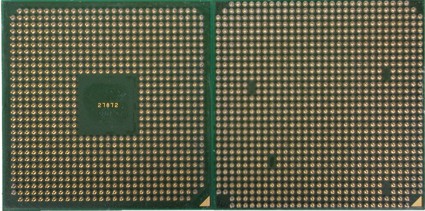Fast Computer On The Cheap? The Sempron 3100+ On Overdrive
Socket 754 Or Socket 939?
The 185 pins missing from Socket 754 are needed by the dual-channel memory controller.
If you want to go with the Athlon 64 you have to make a tough choice. Either you use a Socket 754 system and a CPU between 2800+ and 3700+, or you opt for a better-performing socket 939 system with dual-channel DDR400 memory and processors up to Athlon 64 4000+. This latter platform also features models with the 90 nm Winchester processor core, for considerably reduced power dissipation. Getting the "Socket 939 buzz" costs a bit more though, as the boards and processors are somewhat more pricey, and you should to have a matched pair of DIMMs too.
Sooner or later, Socket 754 will replace the Socket A systems still widely sold in the lower price range. One option for upgraders is the Sempron 3100+, which has no 64 bit instruction set and only 256 kB L2 cache. The memory controller remains integrated, however, so that there is still enough performance at 1.8 GHz clock speed. Other Sempron models will be coming down the road, with all sorts of models planned in the 2600+ to 3400+ range, based on AMD's published roadmaps.
The Thoroughbred-B model of the earlier Athlon XP is also now sold under the brand name Sempron. However, the top-of-the-line model, the Sempron 3000+, does not come nearly as close to the Socket 754 Sempron 3100+ processor as the product designation would seem to imply. We also expect Sempron processors to appear for Socket 939, which should further enhance the attractiveness of this platform in terms of value for money.
Whatever AMD's destiny may be, if you want to be on the safe side and have a little bit of extra money you should go with a Socket 939 system . If your budget is tight and you don't need extremely high performance, you can make a Socket 754 system instead, which will offer quite satisfactory performance for the time being.
Get Tom's Hardware's best news and in-depth reviews, straight to your inbox.
Current page: Socket 754 Or Socket 939?
Prev Page Socket 754 On Overdrive: A Fast Computer With The Sempron 3100+ Next Page 32 Bit Is Ok Too: Sempron 3100+
Patrick Schmid was the editor-in-chief for Tom's Hardware from 2005 to 2006. He wrote numerous articles on a wide range of hardware topics, including storage, CPUs, and system builds.
